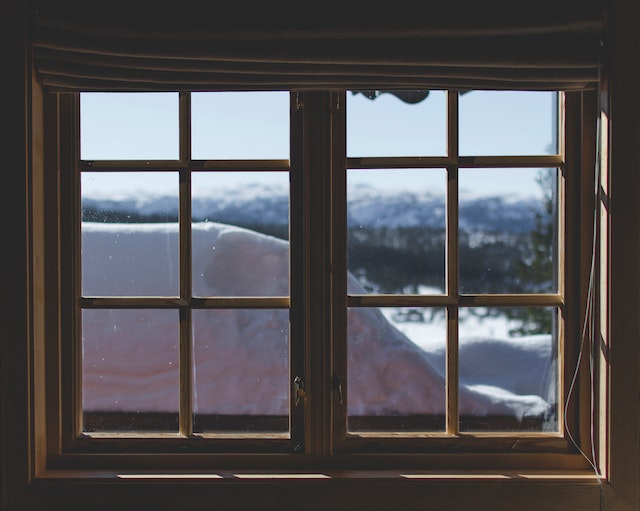
When did people start using glass for windows? The Romans were the first people to have glass in their windows, but it wasn’t a common practice to have glass windows until the 17th century.
There have been window holes since there have been houses because it is necessary to let the light in during the day. However, these windows were merely holes in the wall and were blocked up with wood or animal hide to keep the heat in and the weather out. You could only leave them open when the weather was nice. In order to still be able to let some light in, the animal hides were scraped, stretched, and oiled to make them as translucent as possible. And this is how windows were for a few thousand years.
The Romans started using glass in their windows at the end of the 1st century AD. Glass had been discovered about 6,000 years ago, but glassblowing didn’t start until the 1st century BC, in Syria. It was quickly produced commercially and traded across the whole Roman empire. In the 1st century AD, the Romans discovered that adding manganese oxide to the glass made it clearer, and they decided to put it in their windows. They couldn’t make sheets of glass, like we have now, so they made small circles and set them in a metal frame. The only way to do this was to blow a glass cylinder and then cut the bottom off it. This was why they made circles. Windows were made this way for centuries and it is why stained-glass windows in churches are made of lots of small pieces of glass. If you visit any medieval buildings, they will have small windows and the glass will be held together with pieces of lead.
Glass windows gained in popularity, but they were still far too expensive for most people to own. Animal hides or wooden shutters were the most common type of window for regular people.
A type of glass called crown glass was invented in France in the 14th century. A large bubble of glass was blown and then spun to flatten it in to a large disk. Window panes of different sizes could be cut out of the disk. The problem with this method was that the glass was thicker at the center than it was at the edge. The bit at the center where the spinning rod went had a dimple in it and was called Bullseye glass. This was sold for cheaper windows and can still be seen in some old buildings.
By the 15th century in Europe, glass was becoming cheaper, and more buildings were fitted with glass windows. These were still small pieces of glass set into a frame, but now it could quite often be opened. This led to windows becoming a standard shape because it was easier to have a window hole that the new glass window would fit into.
In 1696, William III of England introduced a window tax which made windows very expensive and there was a lull in the industry. Many people bricked up windows to avoid paying tax. This is where the expression “daylight robbery” comes from.
In the early 17th century, a method for making plate glass was invented in France. Molten glass was poured onto a table and then ground and polished. It was possible to make larger panes of glass, but not as large as we have today. As the price of this glass came down, more and more people started to use glass in their windows.
Then, in 1834, a method for making sheet glass on a cylinder was invented. A long cylinder of glass is blown, cut open, and placed in an oven where it uncurls and becomes a large flat plane of glass. At the same time as this discovery, the window tax was repealed, and a lot of people started to have glass windows.
Laminated glass was discovered by accident in 1903. A French scientist dropped a glass bottle that had been coated with cellulose nitrate. The bottle broke but didn’t shatter into pieces and safety glass was born. This meant that glass in windows could be larger without the danger of having large sheets of plate glass.
In the 20th century, the method to make glass that we still use today was invented. Molten glass is floated on a bed of molten tin and pressurized nitrogen is used to polish the surface. Very large sheets of high quality, completely transparent glass can be made very cheaply using this method.
So, when did people start using glass for windows? It was thanks to the Romans realizing that they could use glass in windows and the French for developing a way of making sheet glass that we have glass windows today, rather than translucent animal hides. And that is what I learned today.
Sources
https://www.thenbs.com/knowledge/windows-glass-glazing-a-brief-history
https://hullworks.com/the-history-of-window-glass
